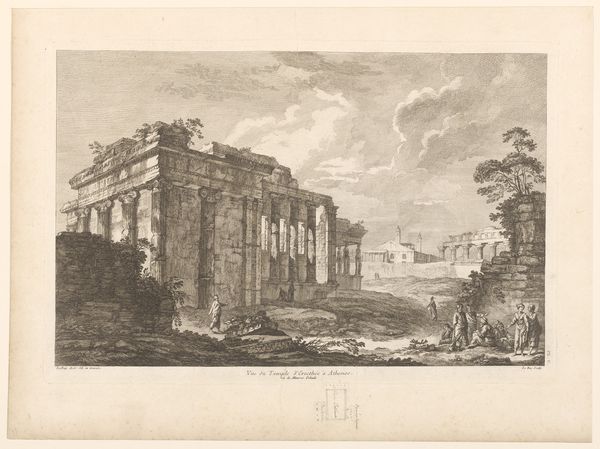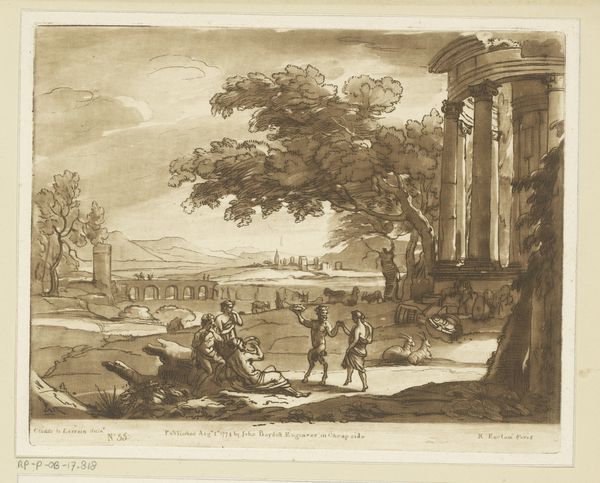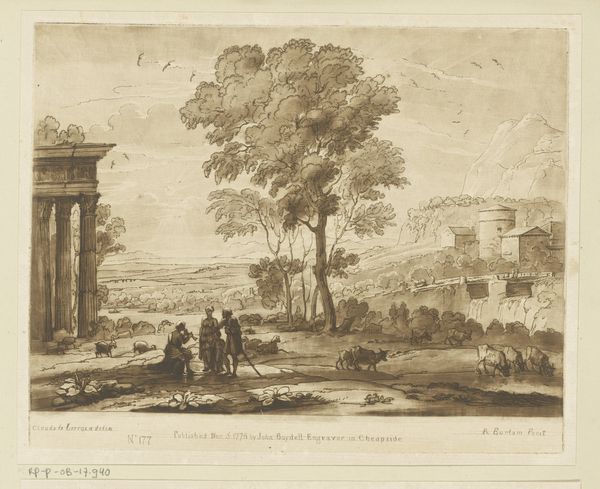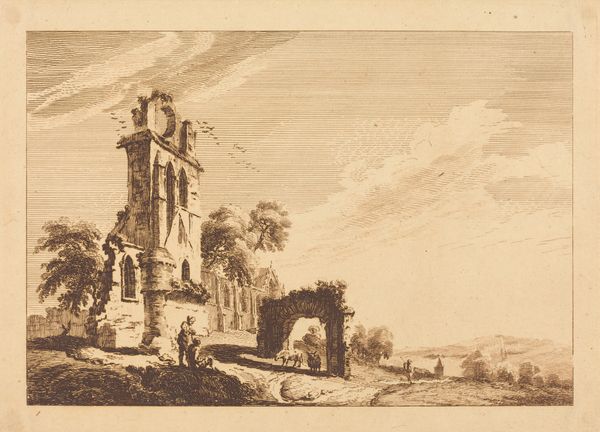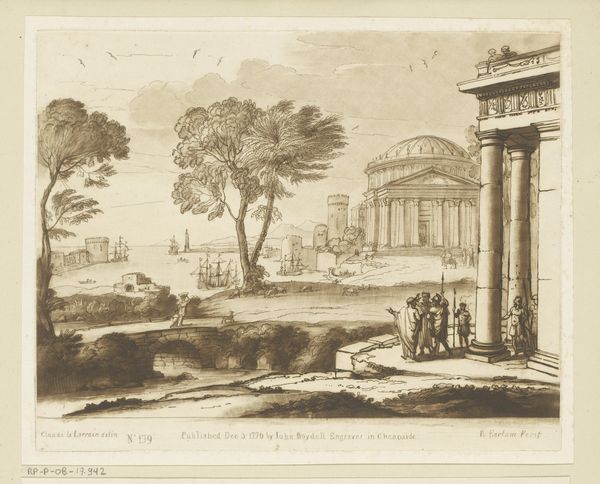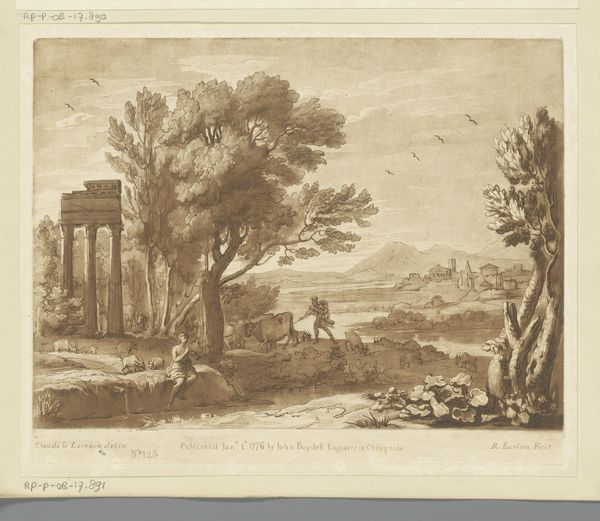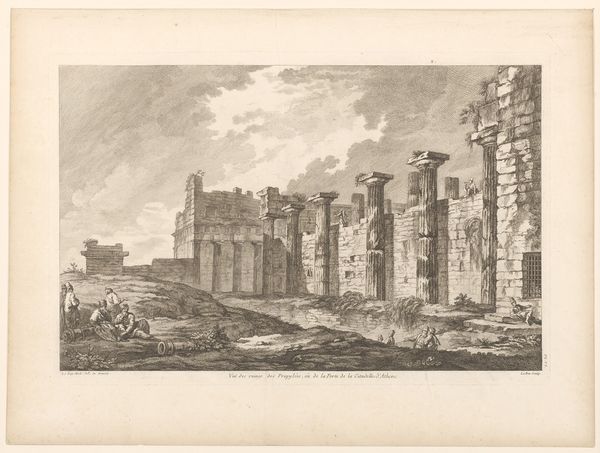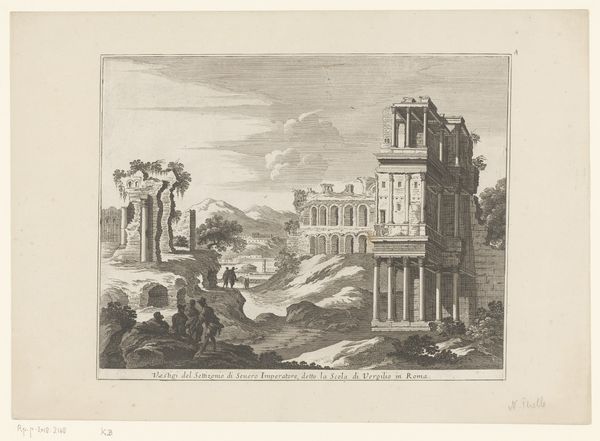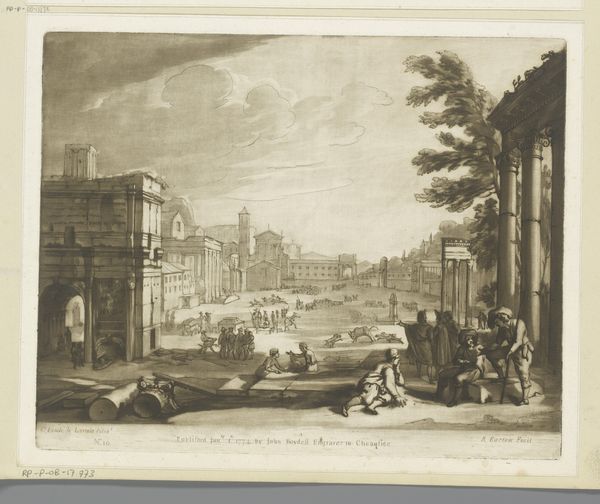
Gezicht in Rome met drie zuilen van de Tempel van Jupiter Stator en het Colosseum 1774
0:00
0:00
richardearlom
Rijksmuseum
drawing, etching, pencil, engraving
#
pencil drawn
#
drawing
#
etching
#
pencil sketch
#
landscape
#
classical-realism
#
pencil
#
cityscape
#
engraving
Dimensions: height 201 mm, width 257 mm
Copyright: Rijks Museum: Open Domain
Editor: This drawing, "Gezicht in Rome met drie zuilen van de Tempel van Jupiter Stator en het Colosseum," from 1774, created by Richard Earlom using pencil, etching and engraving, depicts a cityscape. The faded tones give it an ethereal, almost dreamlike quality. What stands out to you in this piece? Curator: Immediately, I'm drawn to the interplay between the ruined grandeur of Rome and the ordinary life unfolding within its remnants. Consider the materials used: pencil, etching, engraving—methods capable of mass production. This suggests an intended audience beyond the elite. The work, then, documents both a physical space and the *means* by which that space is consumed as an image. Who was buying these images and what did they want to do with them? Editor: That’s a good question. I hadn’t considered how the printmaking process itself plays into the meaning. The ruins are undeniably romantic, but your point about the method makes me see the social element. Curator: Precisely. And think about labor. Earlom didn't directly draw the scene but reproduced sketches by others, translating them into a print. So we have layers of labor, from the initial sketch artist to the engraver and the printer. The commodification of the "grand tour" experience meant artists adapted to market demands and printing technology and developed their expertise, to create an image appealing to a consumer’s sensibility. Editor: That’s fascinating! So, it's not just about the scene itself, but about how it was made and for whom. Looking at the drawing now, I see how it documents not only Rome, but the art market itself. Curator: Indeed. The material choices and processes inform our understanding of the piece within its historical and social context, revealing the layers of production and consumption. We now understand how prints were made and why there were so many of them. Editor: I never thought of a landscape as being a document of labor and production! That really gives me a new way to look at art. Curator: It's all about recognizing how art reflects and participates in material realities.
Comments
No comments
Be the first to comment and join the conversation on the ultimate creative platform.
